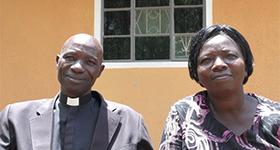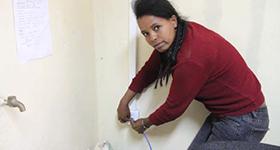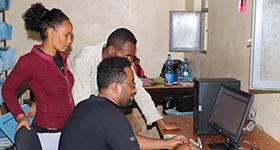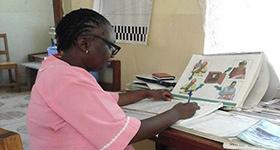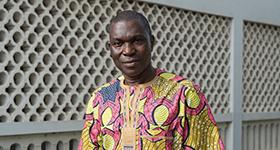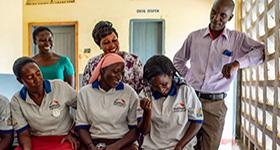Background
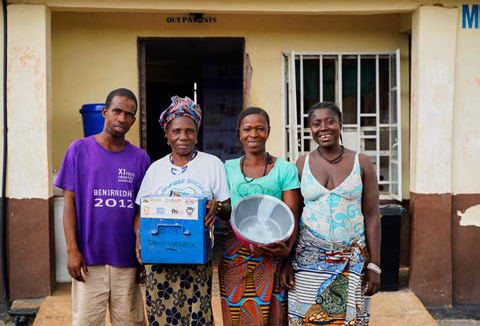
Muhamed Kanu with three members of the VSLA group and their cash box.
“Initially, we were dormant,” said Muhamed Kanu, the Facility Management Committee (FMC) Chairman of the Manumtheneh Maternal and Child Health Post (MCHP) in Sierra Leone’s Port Loko District. The FMC, established when the facility was rehabilitated in 2017, was not meeting regularly and not making progress on the Facility Improvement Action Plan (FIAP). The communities of the Manumtheneh catchment areas lacked a sense of connection to their Peripheral Health Unit (PHU). “We only came to the health facility when we were sick. We thought the nurse in charge was the owner of the facility, and she was solely responsible for supporting and maintaining the facility.”
Intervention
In November 2018, the U.S. Agency for International Development (USAID)-funded Advancing Partners & Communities project, implemented by JSI Research & Training Institute Inc. (JSI) and working with partners CARE and RODA, began to revitalize the FMC and provide refresher programs on the FMC’s responsibilities and commitments to their PHU.
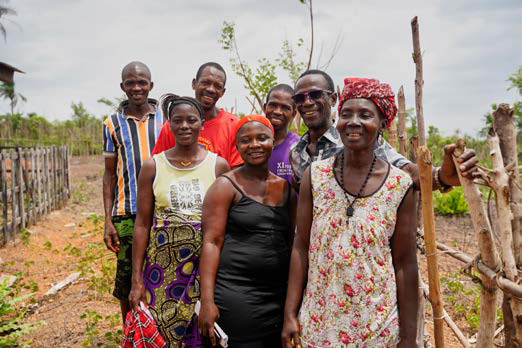
Muhamed Kanu and other community members, who helped to build the PHU’s perimeter fence.
“Now we know we were harming ourselves. This facility is our right and our responsibility, it is not a burden for us to maintain it,” says Muhamed Kanu. This time the FMC’s procedures included some new strategies.
First, FMC members increased their efforts to engage their communities by recruiting community mobilizers. These people are the communities’ “news centers,” and they are perfectly situated to inform communities about new initiatives and get their support. Then, when the FMC goes around collecting household contributions for a maintenance fund for the facility, people are no longer skeptical, and they are ready to give.
Second, the FMC and other community members were trained in the Village Savings and Loan Association (VSLA) model, a community development approach designed to enable groups of 10 to 30 members to save small amounts of money for livelihood development. The VSLA members also contribute to a “social fund,” which is often used for family emergencies. The FMC built relationships with the VSLA groups and encouraged agreements that allow them to approach these groups when funds are needed for maintenance or improvements at the PHU. “It would have been hard to raise the amount in the cash box before; we would have had to go to another village. Now it is easy,” says Muhamed.
Outcomes
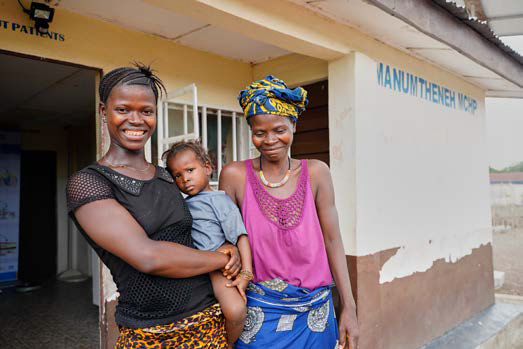
Patients are happy to come to the PHU to receive health services.
The efforts of the FMC are evident just by looking at the Manumtheneh PHU. The grounds are now very tidy, with a strong new fence, and all the essential infrastructure is in good working condition.
Since the revitalization of the FMC, the community is much more supportive of the facility, and maintains regular contact with the in-charge nurse. “We have a strong relationship with the health facility in-charge now. Before the relationship wasn’t even cordial but now, no matter when she calls, we come.”
“We know now that she is not working for herself; she is working for our community, and so we should support her. We are seeing good things come from this, we will follow suit.”
—Muhamed Kanu
The FMC is currently planning to use the funds obtained to change some of the facility’s locks, change the windows, and call for a plumber to fix a stubborn leaky tap.
Thanks to the support of the FMC, the community now feels a sense of responsibility and empowerment to support their PHU. They have realized that these new community resource mobilization methods provide them with the means to address issues at their PHU—so they no longer have to depend on the support of partners and government to make changes.

